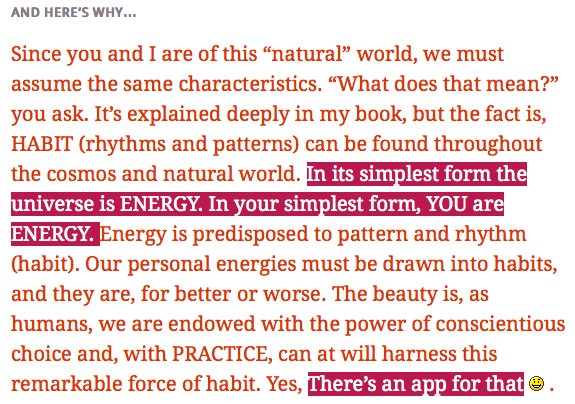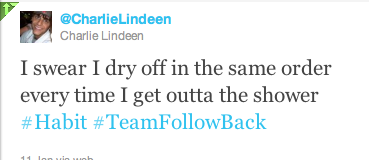
If you could somehow lift the Universe’s Kimono (so to speak), what do you think you’d be left with? Well, physicists would tell you we’d be left with a few curious things like dark matter, dark energy, and energy for starters. However, for our purposes, I believe the important answer is ENERGY.
“Energy is bliss,” William Blake, the great English poet and artist, once declared. And, of course he’s spot on. In fact, energy is a lot more than just bliss. Energy is everything! (The bliss and even the not-so-bliss.)
So, when it comes to any sort of personal achievement, whether conscious or unconscious, you can rest assured that the one constant ingredient always at play is ENERGY.
And, one remarkable trait about energy is that it has this fascinating predisposition for rhythm and pattern. That is, whether you analyze some of the smallest energy forms, say, the DNA/RNA structure, or even the largest energy forms, such as a far-off galaxy, the overarching, general observation is that energy “gravitates” (interesting chose of words) toward pattern and rhythm.
Begin at the beginning.

Good Morning.

Our daily lives are filled with energy and it isn’t too long before we notice our behaviors, themselves, (energy) forming patterns and rhythms. For instance, chances are VERY GOOD you went through the very same morning routine today as you did yesterday and the day before. Chances are excellent you will go to bed tonight and proceed through your same peculiar set of behaviors.
Every day, each one of us assumes these patterns, whether it’s driving to work on the same route, brushing our teeth or TOWELING OFF (see tweet above). Coincidentally, I had just finished speaking at an event and mentioned how a friend confided that he noticed he always towels off in the same exact manner after showering. I thought that was funny, then, randomly, a few days later ran across the above TWEET. Same story, different guy.
Where do we go from here?
Knowing that you and I are truly creatures of HABIT and knowing WHY we are creatures of habit are really two different ideas. Once you couple this understanding (WHY habits exist) with the knowledge of how to conscientiously forge new patterns and rhythms, you can dramatically accelerate your achievement.
Recall, for example: Tying your shoes was rather difficult when you were six years old. Today, it is a habit, an action you can perform without conscious thought. Therefore, it makes sense that the absolute greatest gift you own as a human achiever is the ability to consciously develop, craft and refine new habits at will — habits that align with your desires, goals and objectives.
And, here’s the best part, ANY habit is learnable!
So, how does one best develop a habit?
Well, that has truly been the $64,000 question. To best understand how to develop a habit, it helps to understand the dynamics of our body’s “energy” being. Body building and muscle training provide a fantastic, proven model to strengthen human muscles, and it just so happens a similar process works very well for habit development.
While there are maybe hundreds of other habit development theories and practices, many of which are extremely complex and involve psychological considerations (cues, rewards, punishments, hope, belief, motivation), and while all of these are very important factors, it becomes quickly obvious that those pyscho-dynamics are thought habits of their own which involve work. So, the good news is, this process (The Habit Factor) works whether it’s a mental or physical habit you’re trying to develop!
Doesn’t it take 21 Days to develop a habit?
That theory became popular shortly after, Dr. Maxwell Maltz introduced the idea in his PsychoCybernetics self-help book. His theory was, if you performed a habit 21 days in a row (say for 10-15 minutes), you’d develop a habit — reroute your neuro-associations within the brain. He was a plastic surgeon and he recognized that many of his patients needed new thought habits and self-esteem rather than his plastic surgery. How about that for a doctor?
He originally developed this theory after observing that amputees would tend to lose their neuro-associations right around the twenty-first day.
Unfortunately, 21 days turns out to be no silver bullet. Due to the great number of variables, habits can take three or more months to develop. And, for our purposes here, I’d like to separate the mental/psychological factors involved in habit development. At least for now, since we all recognize for instance, that any participant must first BELIEVE they can develop a new habit.
So, the question remains, what is the best methodology?
ENTER: The Habit Factor®
A significant part of The Habit Factor’s effectiveness can be attributed to a few of its relatively simple and innovative concepts. Each helps to provide a strong framework for habit development via measurement, tracking, feedback and of course repetition.
1) Tracking Period
2) Minimum Success Criteria
3) Target Days
THF’s proven framework suggests that habit development does NOT require successive days. Rather participants may skip days. For instance, if I want to develop the running habit, but my knees may not allow for me to go running every day. With THF’s methodology, you select TARGET DAYS then identify your Minimum Success Criteria. For instance, RUNNING 3x/week (Monday, Wednesday, Saturday. These = Target Days) and then, you establish your Minimum Success Criteria (are you running 20 minutes or 40 minutes) during each “Running” episode.
Next, enter the Tracking Period. For beginners, we highly recommend 4 weeks as an ideal, initial tracking period. Without proper eduction/understanding though this feature has proven to be confusing to people. Those that don’t understand it, don’t want to have a tracking period yet it’s one of THF’s strongest and most unique features.
The benefit of a tracking period is you can compare your target instances to your actual behaviors. Then, say after four weeks you assess your actual behaviors vs your ideals/targets and the app provides this data via its many charting options. (Apparently, that is FUN too – see above). Then, after assessing your chart (actual vs targets) you can quickly identify if you are hitting your targets or not. If not, lower your frequencies and minimums. If so, and this is the beauty and where the muscle analogy comes in, your increase your frequencies per week and/or minimum success criteria. You essentially raise the bar and strengthen the habit muscle!
You may be asking, “Why would I want to lower my targets?” Well, it’s essential that you experience positive, forward momentum. This is why it’s far better to begin habit development with your target frequencies and minimums lower at first. The idea here as it relates to muscle building is it would be ridiculous if you started curling weights to build your biceps with 55lb weights if you’ve never culred before. Similarly, if your trying to build the writing habit, certainly don’t recommend you try to start with writting every day for 1 hr (as a minimum). I would recommend you try for 2 or 3 times a week for say 20 or 30 minutes. This way it’s far easier to gain positive momentum and a sense of accomplishment and encouragment when you hit your lower targets. Then, after the four week tracking period is elapsed, you can establish new frequencies and minimum targets!
Get it? You can do this indefinitely until you (as happened to me) find that you are slipping on the running shoes without any real conscious thought or writing your next book.
Exciting stuff!!!
Until next time, remember, goals are NOT optional!
-Martin
P.S.: Many of you have emailed asking about the status of our Certified Professionals Program. Stay tuned please, apologies for the delay, and if you’re interested please sign up. There will be updates forthcoming and discounts for our early adopters (which may be limited early on!). Thanks!
